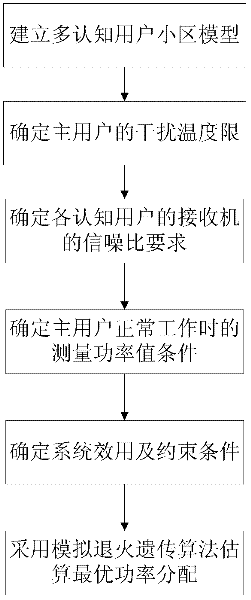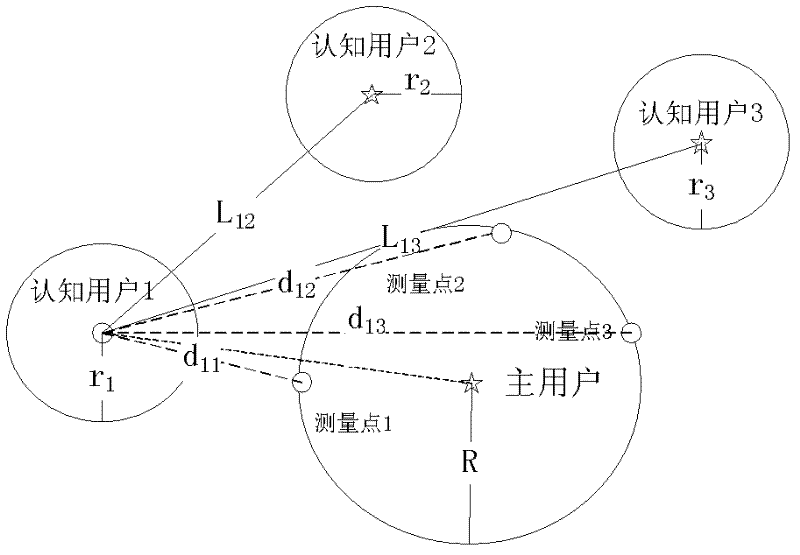Cognitive network power distribution method based on interference temperature
A technology that interferes with temperature and cognitive network. It is applied in the field of cognitive network resource allocation and can solve problems such as increasing the amount of calculation.
- Summary
- Abstract
- Description
- Claims
- Application Information
AI Technical Summary
Problems solved by technology
Method used
Image
Examples
Embodiment Construction
[0064] The technical solutions of the present invention will be described in detail below with reference to the accompanying drawings and with the help of embodiments of the present invention.
[0065] The present invention provides a cognitive network power allocation method based on interference temperature, comprising the following steps:
[0066] First, establish a multi-cognitive user cell model, including setting one primary user transmitter and n cognitive user transmitters, the radius of the primary user cell is R, and the radius of the i-th cognitive user cell (referred to as cognitive cell) is r i , i ∈ {1,...n}. Set m measurement points (MP for short, Measurement Point) in the area of the primary user. In order to facilitate mathematical description and modeling, the location setting of the measurement point is simplified. Each MP is placed on the edge of the primary user cell, that is, The distance from the primary user transmitter is the radius R of the primar...
PUM
 Login to View More
Login to View More Abstract
Description
Claims
Application Information
 Login to View More
Login to View More - R&D
- Intellectual Property
- Life Sciences
- Materials
- Tech Scout
- Unparalleled Data Quality
- Higher Quality Content
- 60% Fewer Hallucinations
Browse by: Latest US Patents, China's latest patents, Technical Efficacy Thesaurus, Application Domain, Technology Topic, Popular Technical Reports.
© 2025 PatSnap. All rights reserved.Legal|Privacy policy|Modern Slavery Act Transparency Statement|Sitemap|About US| Contact US: help@patsnap.com



